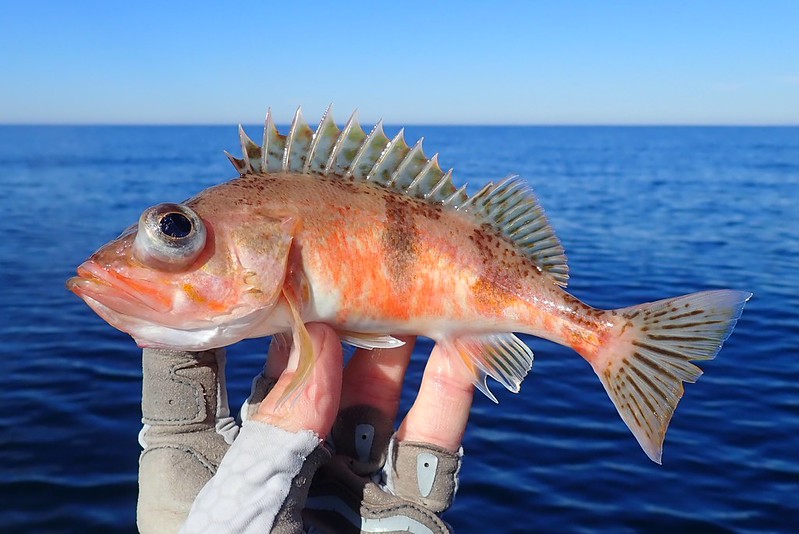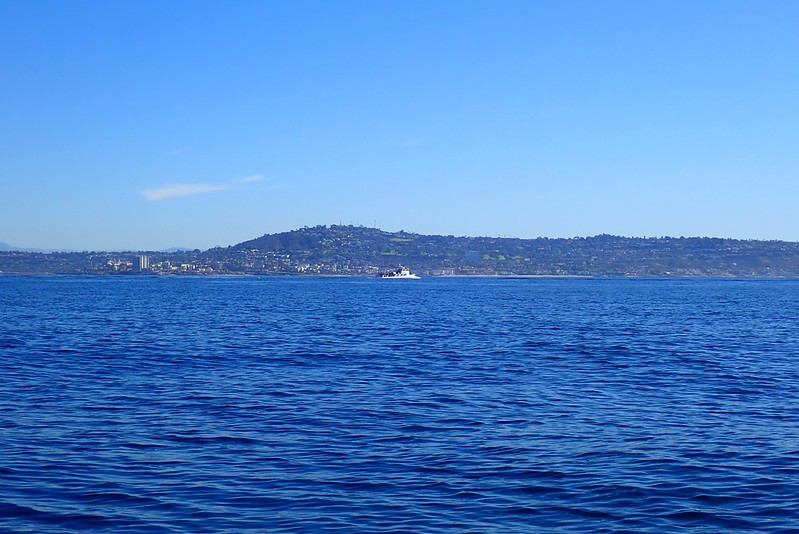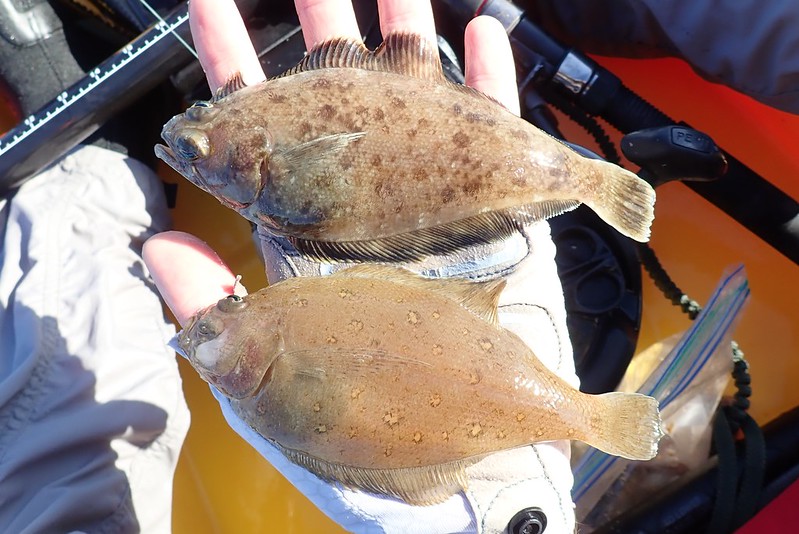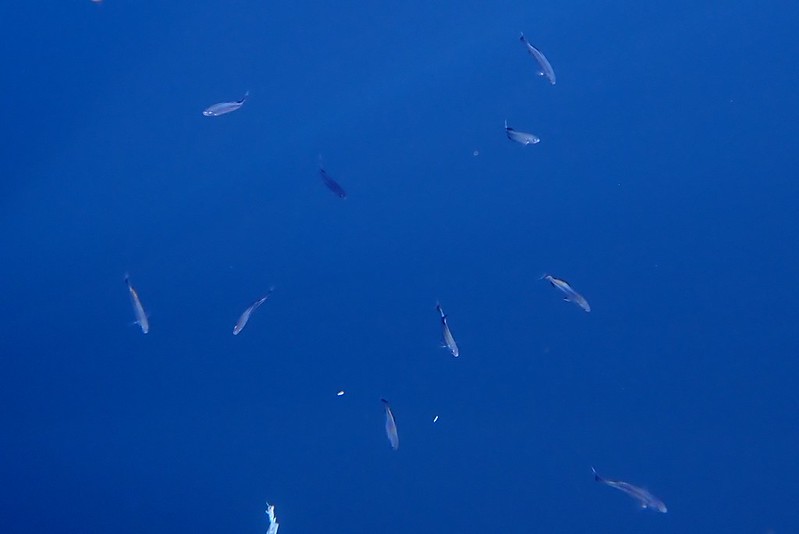
I met up with a guy Esteban who wanted to give deep water rockfishing a try. We were the only two people who launched at sunrise, probably due to the high tide. I had a waypoint marked about 4 miles from shore where it looked like there would be good structure. Along the way we stopped for a break and caught some whitefish.
Ocean Whitefish (Caulolatilus princeps)

It was really cool to see the bottom change from flat and featureless to a rocky seamount when we reached the waypoint. It pays to do your homework! I dropped a 4 oz megabait tipped with squid to the bottom and almost immediately hooked up with my first starry rockfish of the year. Esteban got a starry on his first drop as well.
Starry Rockfish (Sebastes constellatus)

My primary target was a squarespot rockfish for my lifelist, so I switched to dropper loops with smaller sized hooks. Starry rockfish were by far the most common catch of the day, but there was plenty of variety mixed in.
Flag Rockfish (Sebastes rubrivinctus)

Blue Rockfish (Sebastes mystinus)

Rosy Rockfish (Sebastes rosaceus)

California Scorpionfish (Scorpaena guttata)

California Sheephead (Semicossyphus pulcher)

After a few hours Esteban wanted to fish the kelp closer to shore, so he took off while I stuck it out at my spot. I'm sure we'll cross paths again!

The spot I was fishing was between 200 and 250 ft deep, which is the depth that I've always seen other people catch squarespots, so I knew they had to be down there. And sure enough, one eventually turned up.
Squarespot Rockfish (Sebastes hopkinsi) - new hook & line species #648

After that a school of halfbanded rockfish and chub mackerel moved in and wouldn't leave my bait alone, so I put away the dropper loops. You can only catch so many of these guys before they drive you crazy.
Halfbanded Rockfish (Sebastes semicinctus)

Pacific Chub Mackerel (Scomber japonicus)

I wanted one more good fish to cap off the day, so I dropped the megabait again. I thought I had drifted off the structure, so I reeled up a couple cranks and stuck the rod in one of the kayak's rod holders. I pulled out my phone to check the location when the kayak suddenly lurched sideways! Fish on! It was a big vermilion, worthy of using the net on. It measured 4.5 lbs on my fish gripper.
Vermilion Rockfish (Sebastes miniatus)

A lot of the rockfish were spitting up these strange spongy sacks, and I had no idea what they could be. I posted this photo on Instagram, and someone from Scripps chimed in that they're pyrosomes,, which are "free-floating colonial tunicates". What I do know is rockfish like to eat them!


As I paddled back in I saw one of the sport boats heading back towards Mission Bay. I've done a few half day rockfish trips, usually when friends are visiting from out of town, but I'm immensely grateful that I can fish for rockfish now without being crammed on the deck of one of those boats. I won't take what I have for granted.

The screenshot from my Garmin app shows exactly where I was fishing, and I'm fine with that. Next time I head out I'll probably be checking out something new. So if anyone is able to find some fish because of the information I share on this blog, it's perfectly fine with me!

Miles: 11.10
Hours: 7:27
The depth limit for rockfish recently increased from 360 feet to 450 feet, so I think on my next trip I'd like to try the bottom 400+ feet down in La Jolla Canyon. It'll actually be a much shorter paddle from the launch compared to what I've been doing. Hopefully there's some weird stuff down there!

The screenshot from my Garmin app shows exactly where I was fishing, and I'm fine with that. Next time I head out I'll probably be checking out something new. So if anyone is able to find some fish because of the information I share on this blog, it's perfectly fine with me!

Miles: 11.10
Hours: 7:27
The depth limit for rockfish recently increased from 360 feet to 450 feet, so I think on my next trip I'd like to try the bottom 400+ feet down in La Jolla Canyon. It'll actually be a much shorter paddle from the launch compared to what I've been doing. Hopefully there's some weird stuff down there!












